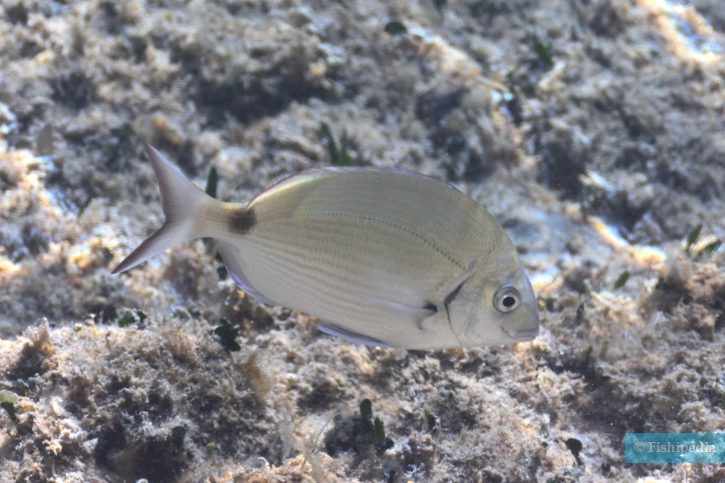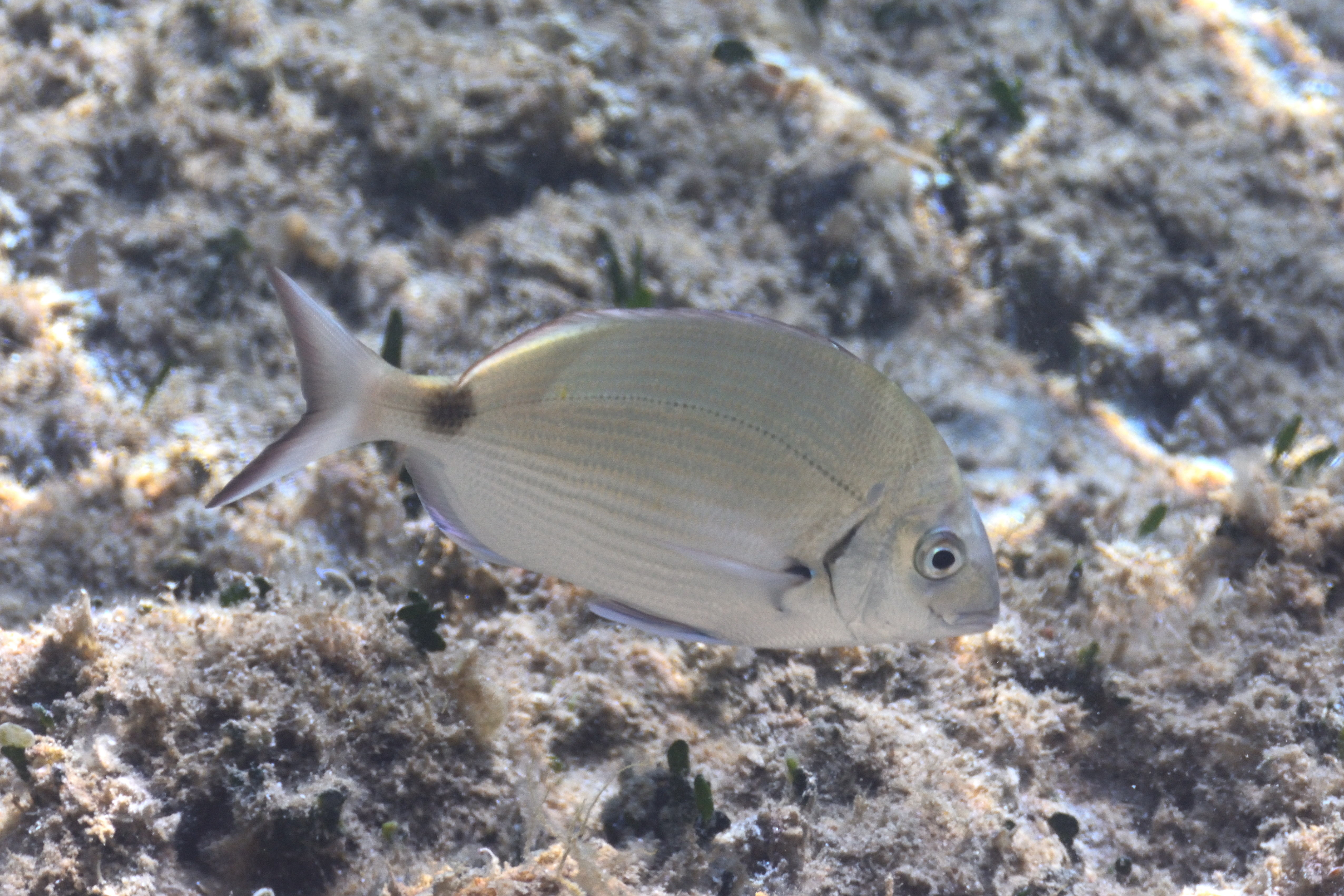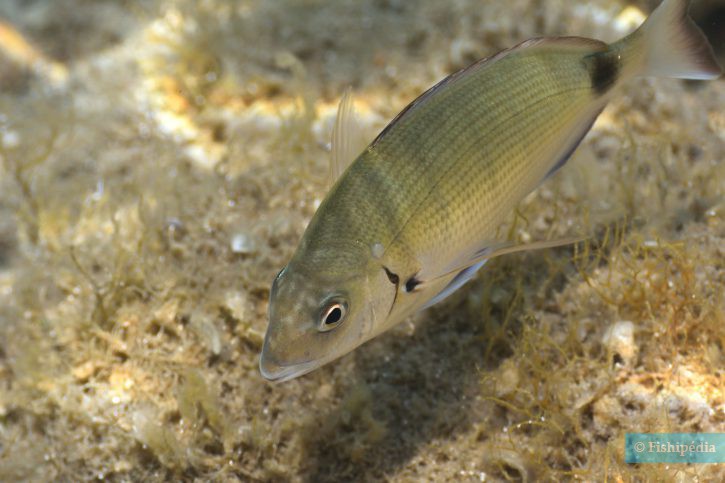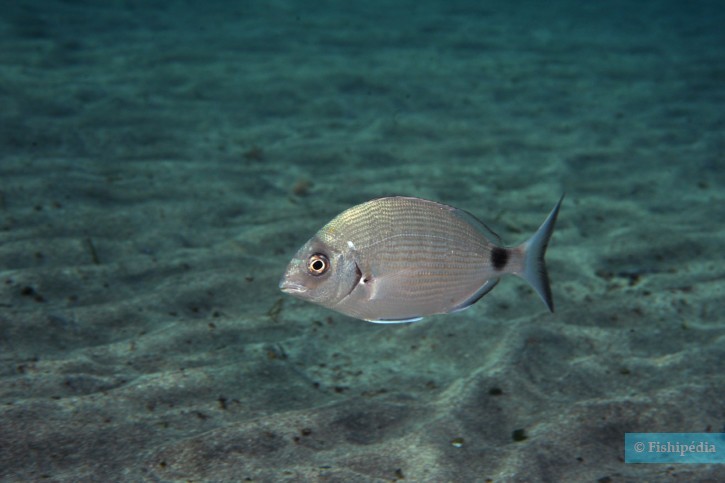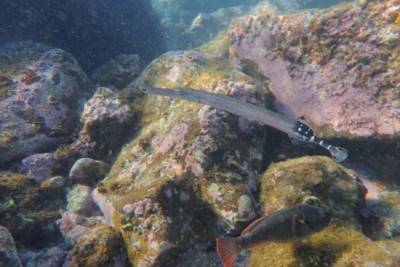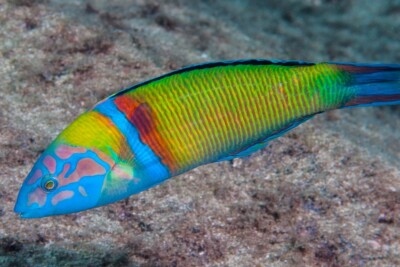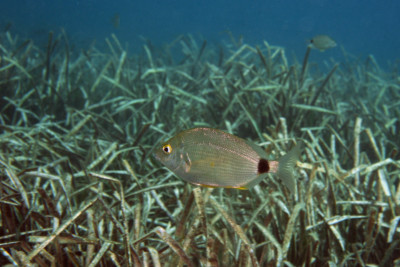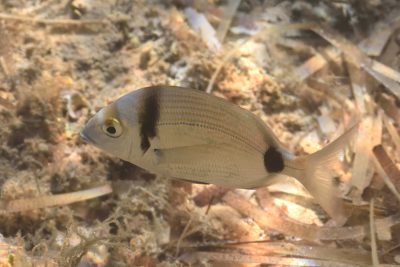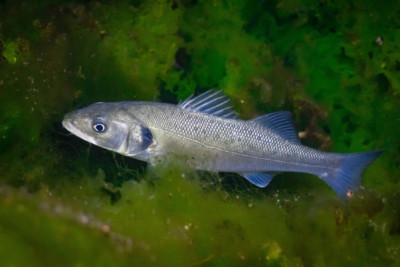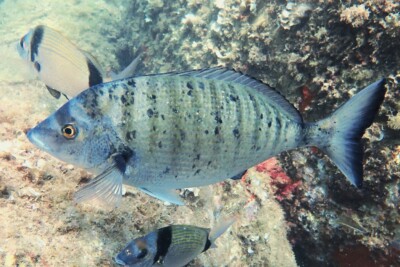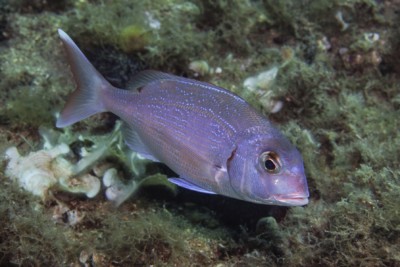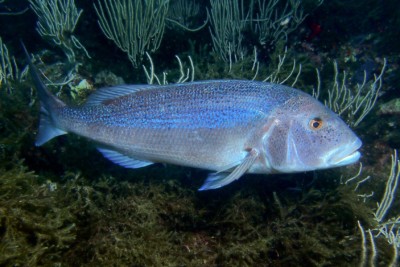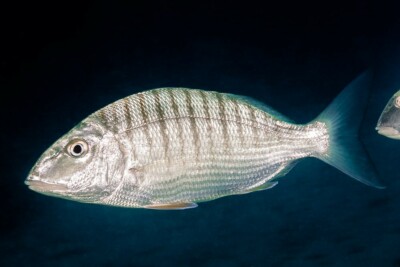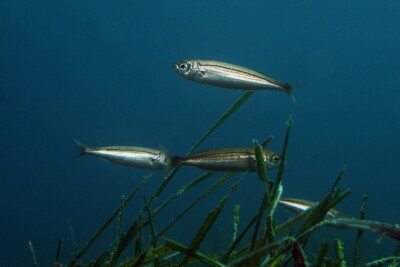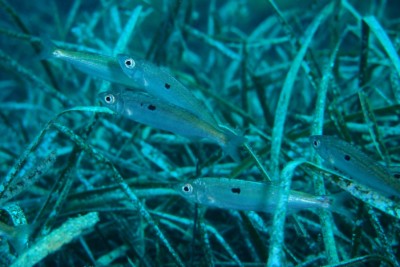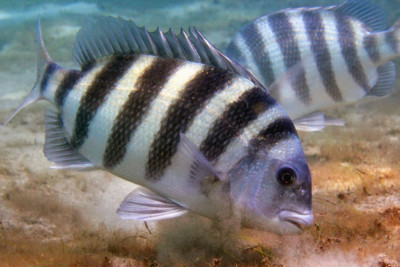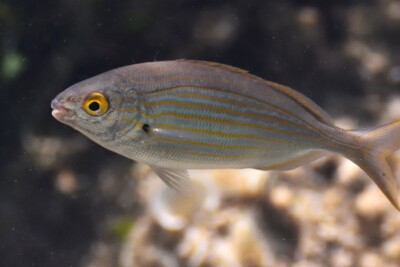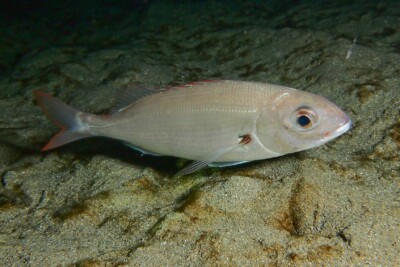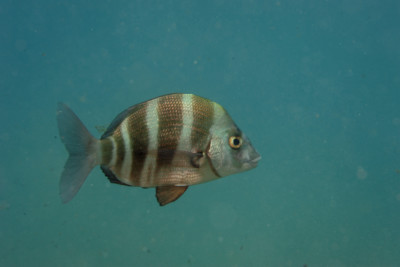Introduction
The white seabream, Diplodus sargus, is an emblematic fish of European coasts. It is found from the North Sea to the Mediterranean. Its abundance varies depending on the regions and fishing pressure. Easily observed from the surface, it is a good indicator of the quality of coastal marine ecosystems.
Who is it?
Morphology
-
Type
-
Average size15 cm
-
Maximum size30 cm
-
ShapeOvoid
-
Patternvertical stripes
-
Type
-
Average size15 cm
-
Maximum size30 cm
-
ShapeOvoid
-
Patternvertical stripes
How to recognize This fish ?
Like other seabreams, the body is compressed and flat. It is light grey with silvery and greenish reflections.
Juveniles and young adults can be distinguished from other seabreams by their nine dark vertical bands. The tail fin is edged in black with a spot at its base. The size ranges from 15 to 30 centimeters. Adult fish have become rare, they could reach over 40 centimeters.
There are seven subspecies of white seabream: D. sargus ascencionis (Valenciennes, 1830), D. sargus cadenati (de la Paz, Bauchot & Daget, 1974), D. sargus capensis (Smith, 1844), D. sargus helenae (Sauvage, 1879), D. sargus kotschyi (Steindachner, 1876), D. sargus lineatus (Valenciennes, 1830) and D. sargus sargus (Linnaeus, 1758).
Sexual dimorphism
Males and females are not easily distinguishable.
Behaviour & Life cycle
-
dietcarnivorous
-
Sociabilityliving in a group or alone
-
territorialNo
-
Way of livingdiurnal
White seabreams are fast and active fish, generally gregarious. They may use the silvery reflections of their bodies to confuse potential predators.
Juveniles live near the coast, in shallow waters. In the Mediterranean, they use seagrass meadows (Posidonia oceanica) and eelgrass (Zostera marina) as nurseries. Adults frequent rugged bottoms, consisting of rocks, pebbles, and sand. These environments provide hiding places and hunting grounds for these fish situated in the middle of the food chain.
White seabreams are omnivorous, with a diet consisting mainly of mollusks (gastropods, bivalves, chitons). They supplement this diet with crustaceans (crabs, shrimps, amphipods...) and aquatic plants (macrophytes). A territorial fish, displays and fights are frequently observed among individuals.
Reproduction
Most individuals appear to be protandrous: they are born male and then change sex as they grow. But not all follow this rule. Some males retain the ability to change into females only when necessary to rebalance the genders within a population.
Sexual maturity is reached at the age of 2, at a size of about 17 centimeters. Spawning occurs from January to March, sometimes later.
Harmless species
Origin and distribution
What is its habitat?
Natural environment characteristics
-
Depth0 - 50 m
-
FlowStrong
Biotope presentation
This species is benthopelagic. It frequents coastal areas, especially rocky bottoms covered with sand and seagrass areas. It is regularly found at depths of less than 50 meters, but individuals have been recorded at depths exceeding 150 meters.
Species of the same biotope
To go further
Sources & Contributions
Participation & Validation
The Fishipedia team and specialist contributors are committed to providing high-quality content. However, although the information comes from scientific sources or testimonials from specialists, the cards may contain inaccuracies.

Benoit Chartrer

Julie Magnus

Silvia Gomez
Translation
Translation done with the valuable contribution of our translators, who make this information available to a wider audience. We sincerely thank them for their commitment.
Scientific partners
Tags
Species of the same family
Same genus
Species of the same biotope
